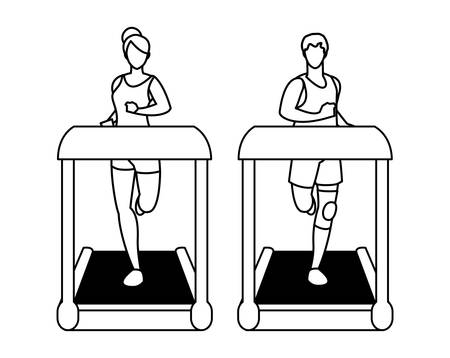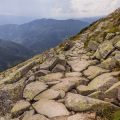1. Understanding Altitude Sickness
What Is Altitude Sickness?
Altitude sickness, also known as acute mountain sickness (AMS), happens when your body struggles to adjust to lower oxygen levels at higher elevations. If you’re planning big hikes in the U.S.—think Colorado’s Fourteeners, the John Muir Trail, or Mount Whitney—altitude sickness can quickly turn an epic adventure into a tough struggle.
Why It’s a Concern on Iconic U.S. Trails
Many popular American hiking destinations soar above 8,000 feet (about 2,400 meters), where the air is thinner and oxygen drops. Even fit hikers from sea level can feel the effects if they ascend too quickly. Knowing what you’re up against helps you prepare smarter and hike safer.
A Visual Overview: How Altitude Affects Your Body
| Elevation | Oxygen Levels Compared to Sea Level | How Your Body Reacts |
|---|---|---|
| Sea Level (0-1,500 ft) | 100% | No altitude effects |
| Moderate Elevation (1,500-6,000 ft) | 95-80% | Mild shortness of breath for some; most people adjust easily |
| High Elevation (6,000-10,000 ft) | 80-70% | Possible headaches, fatigue, dizziness |
| Very High Elevation (10,000+ ft) | <70% | Increased risk of AMS: nausea, loss of appetite, trouble sleeping |
Early Warning Signs to Watch For
- Headache: The most common first sign—don’t ignore it.
- Nausea or Loss of Appetite: Feeling queasy or not hungry is a red flag.
- Dizziness or Lightheadedness: Pay attention if things start spinning.
- Trouble Sleeping: Restless nights at elevation can be more than just nerves.
- Unusual Fatigue: If you’re much more tired than usual, take it seriously.
The Takeaway for Hikers in the U.S.
If you’re hitting classic high-altitude trails like those in Colorado Rockies or California’s Sierra Nevada, understanding altitude sickness is your first step to a safe and successful adventure. Spotting symptoms early and knowing how your body might react will help you make smart decisions on the trail.
2. Identifying High-Altitude U.S. Hikes
Exploring America’s Famous High-Elevation Trails
When you’re planning to tackle some of the most iconic hikes in the United States, it’s important to know which trails rise above the rest—literally! From the jagged peaks of Colorado’s Rockies to the granite ridges of California’s Sierra Nevada, these high-altitude adventures offer breathtaking views and unique challenges. Understanding where these hikes are and what makes each landscape special can help you prepare for altitude and keep your journey safe and fun.
Snapshot: Popular High-Altitude Hiking Destinations
| Hiking Spot | State | Approximate Elevation (ft) | Landscape Features | Special Challenges |
|---|---|---|---|---|
| Longs Peak (Rocky Mountain National Park) | Colorado | 14,259 | Alpine tundra, boulder fields, steep cliffs | Rapid weather changes, thin air, exposed routes |
| Mount Whitney (Sierra Nevada) | California | 14,505 | Granite switchbacks, high passes, alpine lakes | Limited oxygen, sun exposure, snowfields (late season) |
| Pikes Peak (Front Range) | Colorado | 14,115 | Pine forests, rocky terrain, open summit | Sparse tree cover near top, sudden storms |
| Mount Elbert (Sawatch Range) | Colorado | 14,440 | Mossy meadows, forested slopes, broad summit ridge | Lack of shelter above treeline, chilly winds |
| Half Dome (Yosemite National Park) | California | 8,839 | Dramatic granite dome, misty waterfalls, subalpine forest | Cable ascent, slippery rock faces, exposure to elements |
| Borah Peak (Lost River Range) | Idaho | 12,662 | Scree slopes, narrow ridges, rugged wilderness feel | Lack of water sources, loose footing on steep sections |
| Wheeler Peak (Great Basin National Park) | Nevada | 13,065 | Bristlecone pine groves, glacier-carved valleys, open ridges | Drier climate, cold nights even in summer |
The Terrain Tells a Story: What Makes Each Hike Unique?
The Rockies often bring you face-to-face with unpredictable mountain weather—sunshine can turn to hail in minutes. The Sierra Nevada is famous for its endless switchbacks and exposed granite ridges that offer both awe-inspiring panoramas and little shade. In Idaho and Nevada’s lesser-known giants, solitude meets raw wilderness; scree slopes and bristlecone pines paint an ancient landscape under a vast western sky.
A Few Quick Tips:
- Pace yourself: These elevations can make every mile feel longer than expected.
- Know your route: Research current trail conditions and seasonal hazards.
- Aim for acclimatization: Plan shorter warm-up hikes before tackling summit days.
Trekking at high altitude across America is more than just a physical test—it’s an invitation to experience some of the country’s most dramatic natural beauty. By knowing where you’re headed and what obstacles you might meet along the way, you’ll set yourself up for a safer and more memorable adventure.

3. Physical Conditioning from Sea Level Up
Why Start Training at Low Elevations?
Most Americans don’t live at 10,000 feet, but you can still prep your body for those high-altitude hikes right from sea level. Building a solid fitness base now means less struggle and more fun when you hit the big mountains like Colorado’s Fourteeners or California’s Sierra peaks.
Endurance: The Backbone of Altitude Readiness
Trail stamina is key—especially on long, steady climbs where thin air can slow you down. Here are some all-American training routines that work well even if your nearest “mountain” is just a city park hill:
| Routine | How Often | How It Helps |
|---|---|---|
| Brisk Walking or Hiking (with backpack) | 3-4 times/week | Mimics trail conditions, boosts cardio & leg strength |
| Cycling (outdoor or spin bike) | 2-3 times/week | Improves endurance without joint stress |
| Stair Climbing/Step-ups | 2 times/week | Builds uphill power for steep trails |
| Jogging/Trail Running (if able) | 1-2 times/week | Keeps your heart and lungs in shape |
Strength Routines: Trail-Specific Moves
You don’t need a fancy gym membership—just some simple moves at home or in your local park will do the trick. Here’s what to focus on:
- Lunges & Squats: For tackling rocky ascents and descents.
- Step-Ups (on a bench or sturdy box): Mimics stepping up boulders and trail ledges.
- Planks & Core Work: Keeps you balanced with a heavy pack.
- Push-ups & Pull-ups: For upper body strength—useful for scrambling and carrying gear.
A Weekly Training Sample (Mix & Match)
| Day | Main Focus |
|---|---|
| Monday | Cycling + Planks/Core Work |
| Tuesday | Lunges/Squats + Brisk Walk with Pack |
| Wednesday | Rest or Gentle Yoga/Stretching |
| Thursday | Stair Climbing + Push-ups/Pull-ups |
| Friday | Cycling or Jogging + Step-Ups |
| Saturday/Sunday | Long Hike or Trail Run (if possible) |
Tweak Your Training for Your Target Trail
If you’re heading for the Rockies’ switchbacks or the Pacific Crest Trail’s rolling terrain, adjust the mix: add more stair work for steep trails, or longer walks for gentle but lengthy routes. Carry a loaded daypack during workouts to get used to real-life hiking weight.
The American Way: Make It Social and Fun!
No need to go it alone—invite friends, join a local hiking group, or sign up for community 5Ks to stay motivated. The more consistent you are at lower elevations, the better your body will handle big elevation gains out West.
4. Acclimatization Strategies
How U.S. Hikers Prep Their Bodies for High Altitude Trails
If you’re gearing up for a big hike in the Rockies, Sierra Nevada, or any high-altitude U.S. trail, acclimatization is your best friend. Seasoned American hikers swear by specific routines and timelines to help their bodies adjust before hitting those thin-air summits. Here’s how you can do it too—visualized and simplified.
Step-by-Step: The Acclimatization Timeline
| Days Before Hike | What To Do |
|---|---|
| 7-10 Days Out | Begin cardio workouts (jogging, cycling). Gradually add elevation if possible—think local hills or stair climbing. |
| 5-7 Days Out | Stay hydrated, cut out alcohol and caffeine, and get extra sleep. If you can, spend time at higher elevations (even 1,000 ft higher than usual helps). |
| 2-3 Days Out | Arrive early near the trailhead if possible—spend these days at a moderate altitude (5,000-8,000 ft) to let your body adapt. |
| Day of Hike | Eat a light breakfast, hydrate well, and take it slow at the start of your hike. |
The Golden Rules from Experienced U.S. Hikers
- Ascend Gradually: “Climb high, sleep low” is a phrase you’ll hear often on U.S. trails. Hike up to higher elevations during the day but return to lower altitudes to sleep if possible.
- Pace Yourself: Don’t rush. Your body needs time to adjust—think slow and steady wins the race.
- Tune into Your Body: Watch for headaches, nausea, or dizziness. Take breaks as needed; rest is part of training.
- Caffeine & Alcohol: Avoid both for a few days before your trip—they can worsen dehydration and make symptoms worse.
- Hydration Hacks: Drink water throughout the day but avoid chugging large amounts at once. Try electrolyte tablets if sweating heavily.
Your Visual Guide: A Week in Prep Mode
Picture this: You spend the week before your hike doing evening walks on local hills, swapping coffee for herbal tea, packing healthy snacks, and checking off each step in your prep timeline above. By the time you reach that epic American trailhead, your body’s ready for adventure—and those breathtaking views will be worth every bit of prep!
5. Gear and Nutrition for High Elevations
Essential Gear for American High-Altitude Hikes
When youre prepping for iconic U.S. hikes—think Colorados 14ers, Californias Sierra peaks, or the Rockies—your gear can make or break your experience with altitude. Here are the must-haves:
| Gear Item | Why It Matters at Altitude | Pro Tip |
|---|---|---|
| Lightweight Layered Clothing | Temps swing wildly; hypothermia is a real risk above treeline. | Pile on moisture-wicking base layers and a windproof shell. |
| Wide-Brim Hat & Sunglasses | Sun is more intense up high; UV exposure increases with elevation. | Go for polarized lenses and UPF-rated hats. |
| Trekking Poles | Saves your knees on rocky descents and helps keep balance when fatigued. | Adjust poles for uphill (shorter) and downhill (longer) stretches. |
| Hydration Pack or Bottles | Staying hydrated is critical to fend off altitude symptoms. | Look for insulated packs to keep water cool in thin air. |
| Portable Electrolyte Mixes | Replenishes minerals lost through sweat in dry mountain air. | Single-serve packets are easy to stash in pockets or hip belts. |
| Pulse Oximeter (Optional) | Keeps tabs on your blood oxygen levels at elevation. | A handy tool if you’re training or feeling off during hikes. |
Smart Hydration: Your Best Defense Against Altitude Sickness
The dry, thin air at high elevations means you lose more fluids—sometimes without even noticing. Dehydration can sneak up fast, making altitude symptoms worse. Here’s how hikers across America handle it:
- Sip, Don’t Gulp: Drink small amounts frequently rather than chugging water all at once.
- Add Electrolytes: Use tablets or powders to replace sodium, potassium, and magnesium lost through sweat. Brands like Nuun or Liquid I.V. are U.S. trail favorites.
- Aim for Clear Urine: A simple check to see if you’re hydrating enough—the lighter the better!
- Avoid Excess Caffeine & Alcohol: Both can dehydrate you faster at elevation; save that celebratory beer for after the summit!
The All-American Snack List: Fueling Up at Altitude
Your body burns more calories breathing harder in thinner air. U.S. hikers swear by portable snacks that deliver quick energy and salt to help prevent headaches and fatigue. Here’s a go-to list:
| Snack Type | Why It Works Up High | Popular U.S. Brands/Examples |
|---|---|---|
| Energy Bars | Packed with carbs, protein, and easy to eat on the move. | Clif Bar, RXBAR, KIND Bar |
| Trail Mix (Gorp) | Nuts, dried fruit, chocolate—salty & sweet fuel plus healthy fats. | M&Ms + peanuts + raisins is a classic American blend. |
| Dried Jerky (Beef/Turkey/Vegan) | Savory protein fix; helps replenish salt lost sweating it out on switchbacks. | Jack Link’s, Krave, Epic Provisions |
| Crispy Rice Treats/Cookies | Easily digested carbs for quick energy boosts during long climbs. | Kellogg’s Rice Krispies Treats, homemade oatmeal cookies |
| Squeezy Applesauce/Fruit Pouches | Packs vitamins and hydration in one; gentle on the stomach if appetite drops at altitude. | Mott’s, GoGo squeeZ pouches |
| Sodium-Rich Snacks (Pretzels/Pepperoni Sticks) | Sodium helps maintain fluid balance when hiking hard above 10,000 feet. | Snyder’s of Hanover Pretzels, Hormel Pepperoni Stixs |
Packing Tips from American Trails:
- Divide snacks into single-serving bags before hitting the trail—it keeps things tidy in your pack and ensures you refuel regularly.
- If you’re not used to eating at elevation, practice with these snacks during training hikes so your stomach isn’t surprised when you hit the mountains!
The Takeaway: Prepare Like a Pro Before You Climb High in the States!
Your adventure begins long before you hit the trailhead—with smart gear choices and tasty American snacks fueling every step upward. Start practicing now so that when you reach those breathtaking heights, you’ll feel strong enough to soak in every panoramic view.
6. On-the-Trail Practices to Stay Healthy
Pacing Yourself Like a Local
When youre climbing big U.S. peaks like Colorado’s Fourteeners or hiking the John Muir Trail, its all about finding your rhythm. American hikers swear by the “slow and steady” motto—think of it as a marathon, not a sprint. Many use the “conversation test”: if you’re too winded to chat with your trail buddies, you’re probably pushing too hard. Breaks aren’t just okay—they’re smart. Plan to stop every hour for water, snacks, and a quick check-in on how everyone’s feeling.
Sample Pacing Guide
| Trail Condition | Pace (Miles per Hour) | Tip from American Hikers |
|---|---|---|
| Flat/Easy | 2-3 mph | “Keep it chill and soak in the views.” |
| Uphill/Steep | 1-1.5 mph | “Take baby steps—save your lungs for the summit.” |
| Above 10,000 ft | 0.5-1 mph | “Rest more often, hydrate double.” |
Breathing Techniques at Altitude
The air gets thinner as you climb, so efficient breathing is key. U.S. hikers often use “pressure breathing”: take a deep breath in, then forcefully exhale through pursed lips—as if blowing out birthday candles on a windy day. This helps keep oxygen flowing and prevents lightheadedness. Some hikers count their steps while breathing (like two steps inhale, two steps exhale) to maintain a steady rhythm.
Quick Breathing Tips Table
| Technique | Description | When to Use It |
|---|---|---|
| Pressure Breathing | Deep inhale, strong exhale through pursed lips. | Steep climbs & above 8,000 ft. |
| Paced Breathing | Breathe in/out every 2-3 steps. | On long uphill stretches. |
| Nose Breathing | Breathe through nose to warm air. | Milder sections & cold mornings. |
Spotting Trouble: When to Turn Around
Altitude sickness can sneak up fast—even experienced hikers get caught off guard. Watch for these common signs Americans look out for:
- Headache that doesn’t go away with ibuprofen or Tylenol (acetaminophen)
- Nausea or vomiting after eating trail snacks or lunchables
- Dizziness or trouble walking straight—especially after a snack break (“feeling loopy”)
- Trouble breathing even when resting (“can’t catch my breath”)
- Coughing that gets worse as you climb higher (“high altitude cough”)
If you or your hiking partners notice these symptoms, U.S. hikers always say: “The mountain will be there next time.” Descend right away and don’t worry about turning back early—your health comes first. Many national parks have rangers or volunteers who can help if things get serious, so don’t hesitate to ask for assistance at trailheads or along busy routes.


